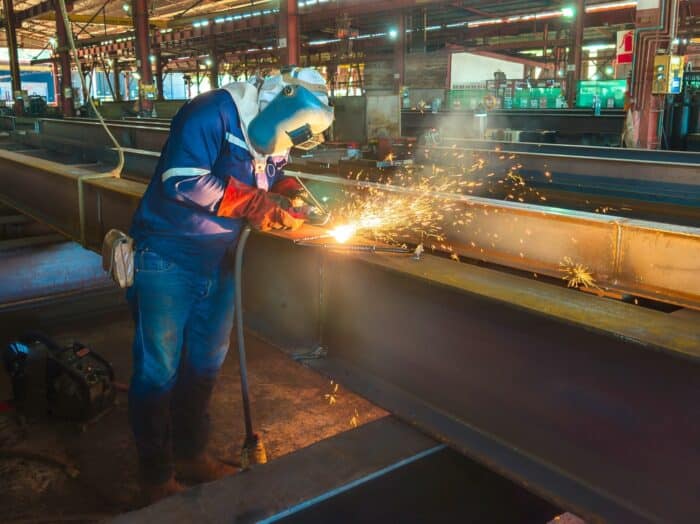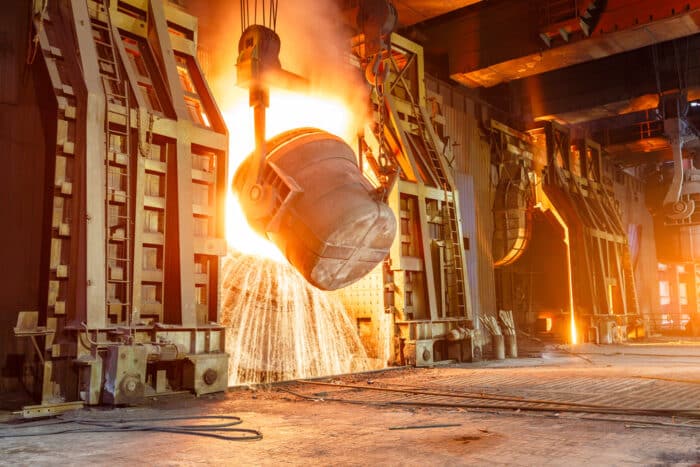What is Mild Steel? A Guide to Its Uses, Properties, and More
January 28, 2025 | Categorized in: Types

What is Mild Steel?
Mild steel, a type of low-carbon steel, is widely known for its versatility, affordability, and ease of use. Its name stems from its mild or low carbon content, typically ranging between 0.05% and 0.25%. This balance gives mild steel a unique combination of strength, malleability, and ductility, making it ideal for various applications in construction, machinery, and everyday products.
Mild Steel vs. Carbon Steel
While mild steel is a subset of carbon steel, not all carbon steels are mild. The key differentiator lies in the carbon content:
- Carbon steels may contain up to 2% carbon, offering higher hardness but less ductility.
- Mild steel, with its lower carbon content, is more pliable and easier to weld and shape. Its cost-effectiveness and ease of fabrication make it a preferred choice for many construction purposes.
Mild Steel Properties
Mild steel’s unique blend of characteristics makes it an essential material in a variety of industries. Its low carbon content ensures ductility and workability, while its composition offers adequate strength and durability for everyday use. These properties, combined with its affordability, create a material that is both versatile and reliable. Here’s a quick overview of its key attributes:
|
Composition |
Iron, 0.05%-0.25% Carbon |
|
Carbon Content |
Low (0.05%-0.25%) |
|
Weight |
Depends on dimensions |
|
Density |
7.85 g/cm³ |
|
Melting Point |
2,500°F |
Mild Steel Composition
Mild steel is primarily composed of iron with a small percentage of carbon. Additional elements, such as manganese, phosphorus, sulfur, and silicon, may be present in trace amounts to enhance its properties:
- Carbon: 0.05%-0.25%
- Iron: ~98% (primary component)
- Manganese: Improves strength and wear resistance
- Silicon and Phosphorus: Contribute to its machinability

Mild Steel Carbon Content
The carbon content of mild steel falls between 0.05% and 0.25%. This lower carbon range ensures that the steel remains ductile and easily workable, while still providing sufficient strength for most applications. The lower carbon content also means mild steel is less prone to brittleness compared to high-carbon steels.
Density of Mild Steel
The density of mild steel is 7.85 g/cm³, meaning it is relatively lightweight compared to other steel types with higher alloy contents. This property, combined with its strength, contributes to its widespread use in construction and manufacturing.
Weight of Mild Steel
The weight of mild steel depends on its dimensions and density. Mild steel’s density is approximately 7.85 g/cm³ (or 7850 kg/m³). To calculate the weight of a mild steel object, you can use the formula:
Weight = Volume x Density
Mild Steel Melting Point
Mild steel has a melting point of approximately 2,500°F. This high melting point makes it suitable for applications involving heat and welding. It also ensures durability in high-temperature environments.
How is Mild Steel Made?

The production of mild steel involves several steps:
- Extraction of Iron Ore: Iron ore is mined and processed to extract raw iron.
- Electric Arc Furnace: The iron is heated with coke and limestone in an electric arc furnace, producing molten iron.
- Carbon Adjustment: The molten iron undergoes a refining process to reduce carbon content to the desired level for mild steel.
- Casting and Rolling: The refined steel is cast into shapes such as slabs or billets and then rolled into final forms like steel sheets, pipes, or beams.
Mild Steel Applications

Mild steel’s versatility ensures its use across a broad range of industries. Here’s how it supports various applications:
- Construction: Used in structural components like beams, columns, and reinforcements due to its strength and reliability.
- Automotive: Employed in car body panels, chassis, and engine parts where durability and malleability are crucial.
- Machinery: Forms the backbone of industrial equipment and tools, such as frames, gears, and mechanical parts.
- Fabrication: Widely used in welded structures, custom metalwork, and artistic metal creations because of its workability and aesthetic potential.
Why Mild Steel is a Top Choice
Mild steel stands out as a cornerstone material due to its balance of strength, affordability, and workability. Its wide-ranging applications—from high-rise construction to car part manufacturing—demonstrate its importance in modern life. Whether you’re looking to build, fabricate, or innovate, understanding mild steel helps you make informed decisions.
At Service Steel Warehouse, we specialize in high-quality structural steel tailored to your needs. Whether you’re in the Northwest, Midwest, or Southeast, we have a vast inventory along with custom steel services, we’re here to support your projects. Contact us today to learn more and explore our offerings!

